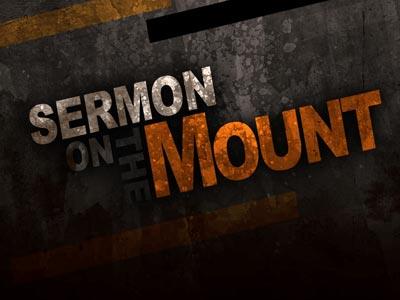-
Are You Kidding... Turn The Other Cheek? Series
Contributed by Monty Newton on Feb 26, 2011 (message contributor)
Summary: We make Christ known by the way we respond to our adversaries.
Title: Are You Kidding… Turn the Other Cheek?
Text: Matthew 5:38-48
Thesis: We make Christ known by the way we respond to our adversaries.
Epiphany Series: Encountering Christ in Epiphany
• On the Seventy Sunday after Epiphany Jesus teaches his followers that one of the ways we make him known is by demonstrating a gracious spirit toward those who wrong us.
Introduction (This is a rather lengthy introduction but does serve to set the background for understanding the text.)
Prior to the old “eye for eye and tooth for tooth” adage there was a brief word of instruction in Genesis 9:6 in which God tells Noah and his descendants how to do justice in the event of a murder. “Whoever sheds the blood of man, by man shall his blood be shed; for in the image of God has God made man.”
The objective was not so much to “lay down the law” as it was to make the point that life is sacred to God. And because life is sacred, the person guilty of taking a life was to reap the consequences of his actions by forfeiting his own life. Of course this raises some question in the minds of some who then wonder how the taking of a second life honors the sanctity of life. But that is another discussion.
In Exodus 21 we find the first reference to “eye for eye and tooth for tooth.” In an extended discussion about personal injuries the law was given stating, “If there is a serious injury, you are to take life for life, eye for eye, tooth for tooth, hand for hand, foot for foot, burn for burn, wound for wound, bruise for bruise.” Exodus 21:23
Because people took the law seriously and sometimes too seriously, in the interest of insuring justice the Israelites were instructed to establish cities of refuge(Deuteronomy 19:1-14) where a person involved in a situation where a life was lost could flee and be safe while awaiting a fair trial. The loss of life was not necessarily intentional… there were then as there are now accidental deaths and mitigating circumstances. However, as we all know, those concerned about exacting “eye for eye and tooth for tooth” are not so much interested in justice as they are in vengeance.
So the cities of refuge served an important purpose. In Deuteronomy 35 the intent of the cities of refuge are clearly declared to “be places of refuge from the avenger, so that a person accused of murder may not die before he stands trial before the assembly.” (Deuteronomy 35:12) However a trial in a city of refuge was no guarantee of getting off easy. If a person was indeed found to be guilty, the judicial system was instructed in Deuteronomy 19:21, “Show no pity: life for life, eye for eye, tooth for tooth, hand for hand, foot for foot.”
Interestingly the “eye for eye and tooth for tooth” law provided that the guilty party was to be avenged by a person known as “the avenger of blood.” The avenger of blood was typically the closest male relative of the wronged person. Even a quick reading of Numbers 35 will show that the avenger of blood “shall” put to death the murder or “may” kill the accused.
In preparation for today I did quite a bit of reading on the subject and found that the idea of the avenger of blood is what over the centuries has given rise to what we know today as “blood feuds” or vendettas. And if you think the practice of vengeance through blood feuds is a thing of the past, it is still practiced widely in certain parts of the world today. Retribution through blood feuds and vendettas are common in parts of France, Italy, Greece, the Kurdish clans of Iraq and Turkey, Albania, among the Pashtuns in Afghanistan and many others including the Shiites and Sunnis in Iraq.
Can you imagine what the people must have thought when Jesus took exception to the law, “eye for eye and tooth for tooth?”
This was a culture steeped in the notion “eye for eye and tooth for tooth” justice. This was a culture that may have been a bit more civilized than some and whose judicial system allowed for “blood money” to be paid rather than the actual shedding of blood.
The more even thinking, rational people understand that justice is not necessarily “tit for tat.” And today our judicial system today still follows the idea of “eye for eye and tooth for tooth” but interprets that to mean the injured party receives some kind of remuneration for having been wronged.
In our own American history the infamous and endless stream of conflicts between the Hatfields and the McCoys resulted in the murder of a relative who testified against the McCoys over the ownership of a hog. In a blood feud it is never “eye for eye and tooth for tooth.” It more often takes the form of," You took my hog so now I’m gonna kill one of your relatives.” It is seldom justice… it is usually justice – plus a little more justice.

 Sermon Central
Sermon Central



